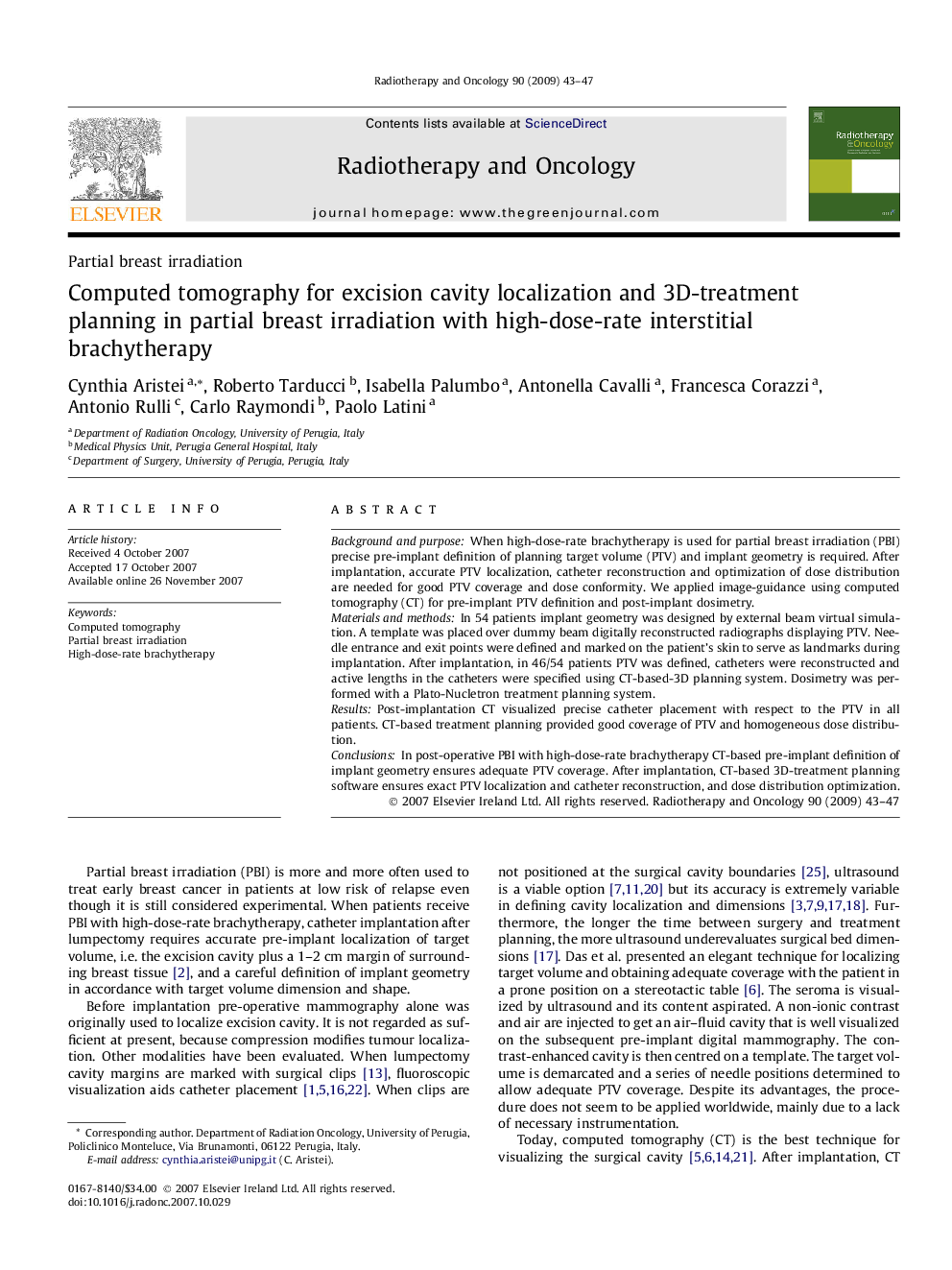| Article ID | Journal | Published Year | Pages | File Type |
|---|---|---|---|---|
| 2160149 | Radiotherapy and Oncology | 2009 | 5 Pages |
Background and purposeWhen high-dose-rate brachytherapy is used for partial breast irradiation (PBI) precise pre-implant definition of planning target volume (PTV) and implant geometry is required. After implantation, accurate PTV localization, catheter reconstruction and optimization of dose distribution are needed for good PTV coverage and dose conformity. We applied image-guidance using computed tomography (CT) for pre-implant PTV definition and post-implant dosimetry.Materials and methodsIn 54 patients implant geometry was designed by external beam virtual simulation. A template was placed over dummy beam digitally reconstructed radiographs displaying PTV. Needle entrance and exit points were defined and marked on the patient’s skin to serve as landmarks during implantation. After implantation, in 46/54 patients PTV was defined, catheters were reconstructed and active lengths in the catheters were specified using CT-based-3D planning system. Dosimetry was performed with a Plato-Nucletron treatment planning system.ResultsPost-implantation CT visualized precise catheter placement with respect to the PTV in all patients. CT-based treatment planning provided good coverage of PTV and homogeneous dose distribution.ConclusionsIn post-operative PBI with high-dose-rate brachytherapy CT-based pre-implant definition of implant geometry ensures adequate PTV coverage. After implantation, CT-based 3D-treatment planning software ensures exact PTV localization and catheter reconstruction, and dose distribution optimization.
